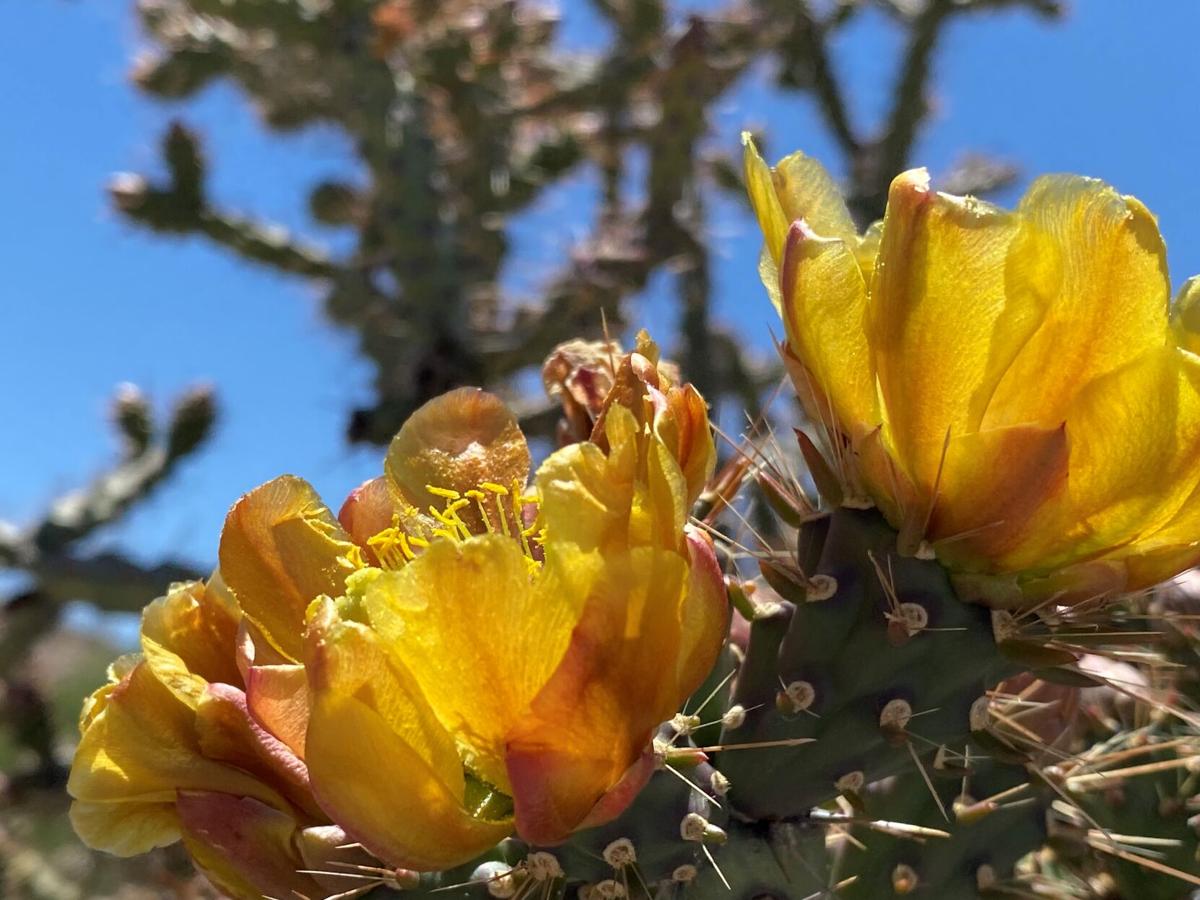One of the most common and iconic plants in our desert is the cholla cactus (Cylidropuntia spp.). It’s also a plant that many people love to hate. So why am I making it my plant of the month?
Our discrimination against the cholla (of which there are many species across the southwest U.S. and Mexico) stems from our unavoidably anthropocentric views on plants. Sure, it’s very spiny and unpleasant if you get entangled with one of these plants. But they are indispensable for many of the creatures that call the Sonoran Desert their home.
It’s certainly true that the spines of cholla cacti are extremely painful to encounter. Just ask Sir David Attenborough, world-famous naturalist and TV host of nature documentaries too numerous to count. He encountered cholla while filming a segment on the Sonoran Desert last summer. He reached out to a teddy bear cholla (C. bigelovii) with thick gloves, and I found myself screaming at the TV “Nooo! Don’t do it!” The result was priceless, educational and wince-inducing.
Those terrible spines, which are extremely sharp and have backward-pointing barbs, have a couple of uses. First, of course, is defense. But the spines also help the buds affix themselves to the soil, so that they can root — an important ability for plants that frequently reproduce vegetatively rather than through flowers and seeds. They can also easily hitch a ride on the fur coats of desert animals to help spread their buds.
Many animals in the Sonoran desert take advantage of the cholla’s formidable defenses. Birds such as cactus wrens love to nest in the branches, and packrats drag off the buds to armor their middens. Surprisingly, many animals are also able to eat the fruit. Jackrabbits, mice, bighorn sheep, javelina and desert tortoise are among some of the animals that are able to get nutrition from cholla, frequently at a time of year when not much else is available. Native bees and other pollinators, including bats, love the nectar.
Given all of that, should you plant these in your yard? If your yard is small, likely no. But for those fortunate enough to have larger expanses, the cholla is an excellent addition to a wildlife garden. If you do decide to grow it in your garden, choose a spot that is sunny, hot and out-of-the-way, with well-draining soil. As far as planting goes, nothing can be easier — just stick a stem or bud in the ground, give it a nice watering, and then leave it alone. You may need to water it a couple of times more, but in general cholla of all kinds thrive on neglect.
One benefit you'll see are their incredible blooms, which are similar in form to those of the prickly pear cactus. They can range in color from yellow to rusty orange to light lavender. Be aware, however, that they won't necessarily bloom each spring.
So if you have the room for cholla, give them a chance. Our desert critters will appreciate it, and you will have the benefit of spectacular flowers.
PsyPost reports that a recent study suggests that horticulture therapy may be effective at reducing depression symptoms in older adults.





